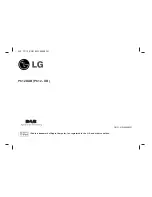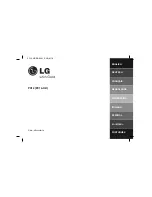
7
DCF signal
successfully
failed
The clock automatically scans the time signal at 3.00 a.m. every day to maintain accurate
timing. If reception fail, scanning stops (“
” on LCD disappear) and repeats again at
4.00 a.m. 5.00a.m. and6.00a.m.
The clock can be set to scan the time signal manually by holding “
” button (B9) for 3
seconds. Each reception takes about 5 minutes. If receptions fail, scanning stops. (“
”
on LCD disappear) and repeats again on next full hour. E.g. scanning failed at 8:20a.m.
It will scan again at 9:00a.m.
Stop scanning by holding “
” button (B9) for 3 seconds.
“DST” shown on the LCD if it is in Daylight Saving Time Mode
Note: Buttons (except “
LIGHT
” button (B6)) will not function while scanning for DCF time
signal unless they are well received or stopped manually.
8.2 Manual Time Setting:
Hold “MODE” button (B3) for 3 seconds to enter Clock/Calendar setting mode.
Press “-” (B9) or “+” (B8) button to adjust the setting and press “MODE” button (B3) to
confirm each setting.
The setting sequence is shown as follow: Hour, Minute, Second, Year, Month, Day, Time
Zone, Day-of-week language.
8 languages can be selected in Day-of-week, they are: German, French, Spanish, Italian,
Dutch, Denmark, Russian, and English.
The languages and their selected abbreviations for each day of the week are shown in the
following table.
Language Sunday
Monday Tuesday Wednesda
y
Thursda
y
Friday Saturday
German, GE
SO
MO
DI
MI
DO
FR
SA
English, EN
SU
MO
TU
WE
TH
FR
SA
Russian, RU
BC
BT
CP
Denmark, DA
SO
MA
TI
ON
TO
FR
LO
Dutch, NE
ZO
MA
DI
WO
DO
VR
ZA
Italian, IT
DO
LU
MA
ME
GI
VE
SA
Spanish, ES
DO
LU
MA
MI
JU
VI
SA
French, FR
DI
LU
MA
ME
JE
VE
SA
The Time zone is used for the countries where can receive the DCF time signal but the
time zone is different from the German time.




























